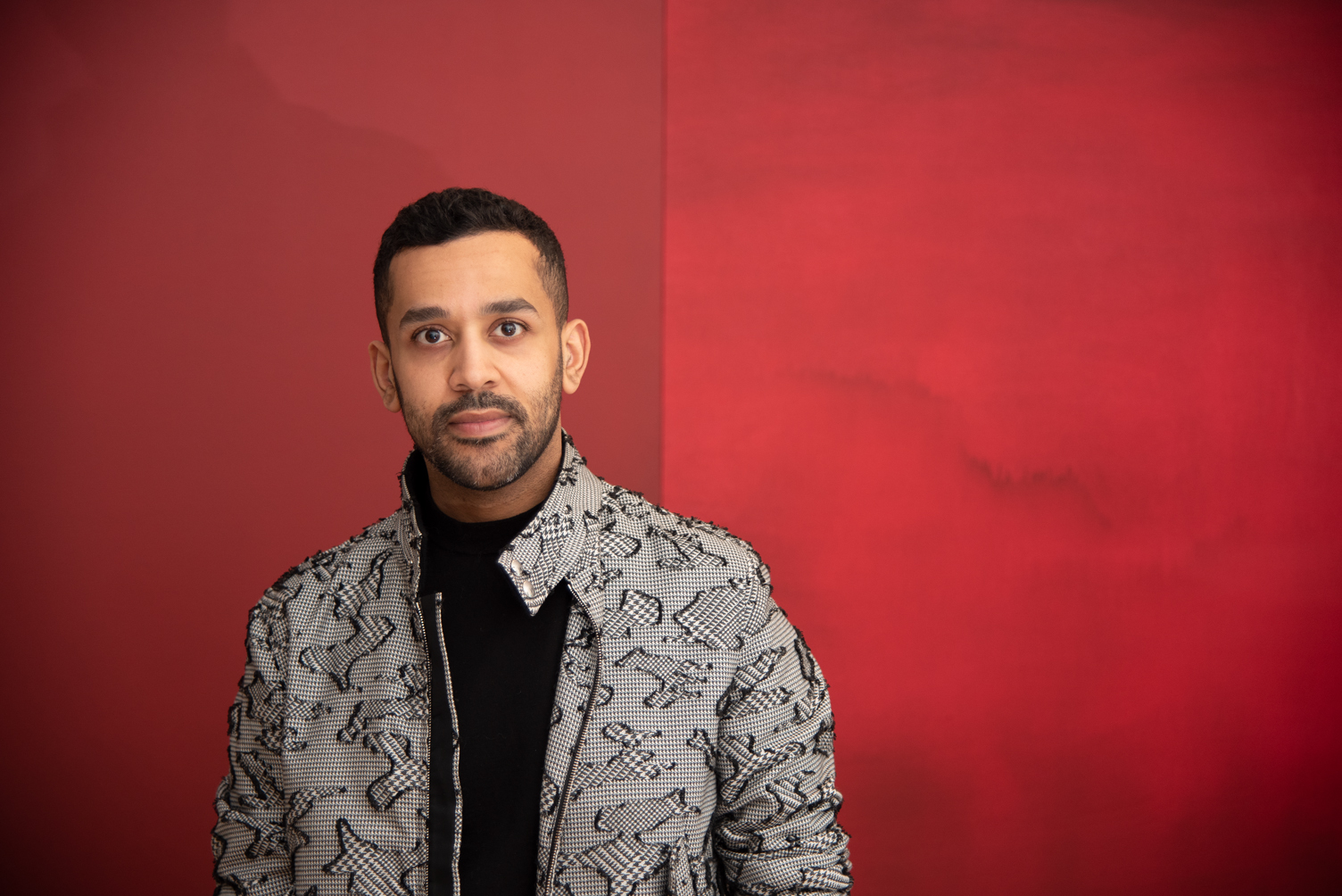The nonprofit Institute of Arab and Islamic Art at 22 Christopher Street recently opened “Endless Night,” Lebanese artist Nabil Kanso’s debut solo exhibition in New York. Tackling the artist’s upbringing in Beirut during the Arab-Israeli War, it’s the latest presentation from IAIA to offer diplomacy through art. Observer recently caught up with IAIA’s founder and patron Sheikh Mohammed Rashid Al-Thani to hear more about the new show and IAIA’s initiatives since it opened its doors in 2017
What should my readers know about your new show, “Endless Night,” Nabil Kanso’s debut solo show in New York?
Nabil is a seminal figure in protest art, an artist who has developed a unique visual style that stemmed from neo-expressionism and mythical Iconography. He was determined to portray that war, no matter how far or foreign has an impact on our universal humanitarian conscience. His message, as powerful as his style of painting, 50 years later, still resonates, even more so today than ever.
How do you choose your artists?
I tend to look at styles and aesthetics, and go into a deeper reading of those artists, and look into how their works fit into a larger contemporary art canon. Artists whose works we exhibit are seminal figures in art history, but often due to marginalization, they have not been given the platform they deserve. I believe the institute stands as a platform for artists who challenge existing narratives and push us to expand our perspectives on what we understand of art.
IAIA works to promote artistic and cultural dialogue between New York City and the Arab and Islamic worlds. Why do you personally find this cause to be important?
It’s important, in a multicultural city, with representations from across various civilizations that the audience understands that artists from the Arab and Islamic regions are present, and are active participants in contemporary global culture. A space like ours brings in diversity and understanding and normalizes being Arab or Muslim at a time when stereotypes and renewed misconceptions of the region create a deeper divide.
You wrote your dissertation on Fauvism and Cubism. What drew you to those movements?
Those movements were seminal in the development of post-war art and had an undeniable impact on movements that developed in the years to follow. Moving away from the traditional forms of representations, Matisse and Picasso drew so much from Cezanne, thus Favism and Cubaism sit at a crossroads between various movements, which allow us to understand why and how styles often evolve and grow.

You’ve worked as a curator at Mathaf: Arab Museum of Modern Art and the Museum of Islamic Art, both in Doha. What are some of the big differences in programming for audiences in New York vs. Doha?
The history of museums in Doha is relatively new and ever-growing, as the great developments in art and culture spearheaded by Her Excellency Sheikha Al Mayassa the Chairperson of Qatar Museums is reshaping the socio-cultural environment in Doha and the Arab World. In a society that has a fresh take on contemporary art, the stakes are higher and our responsibility towards the audiences in Doha is greater, as exhibitions in museums have the power to shape people’s perspective and conventions about art. In New York on the other hand, we are often working with a socio-cultural environment that is more deeply rooted in modern and contemporary art, with knowledge that is informed by Western movements. With that comes the beauty of encouraging our audience in New York to challenge their ideas on existing narratives, and bring together an alternative way of understanding art from a more inclusive perspective.
SEE ALSO: Looking at the Future of the M+ Museum and Creative Freedom in Hong Kong
What are the main differences between artists working in the West and those working in Arab and Islamic parts of the world?
The deep history of Islamic Architecture, Science, and Calligraphy brings a rich and diverse quality to the lives of artists that come from the Arab and Islamic Worlds, as those histories are very present in the aesthetics of cities from the region. Post-war in the Arab world is also defined by conflict. Together there is often an aspect of storytelling in art that comes from the Arab and Islamic Worlds. Western art is a little bit more linear, as certain art movements inspired different waves of styles to develop as a reaction to different moments in history, but also those moments allowed for styles to break away from the norms of classical art and help redefine our conventions of beauty.
What have you learned in the years since IAIA opened its doors?
That art has the power to move people and open their hearts and minds to narratives that otherwise seem foreign and unaccepting. That the power of culture defies war and conflict… that stereotypes and misconceptions collapse in the presence of art and culture. The conversations that develop through seeing and experiencing art have a long-lasting impact on our conscience.

